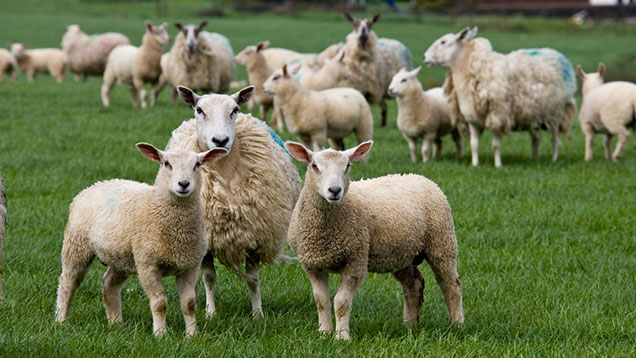Advice for sheep farmers short of grass
 © Tim Scrivener
© Tim Scrivener Sheep farmers short of grass are being advised to prioritise getting condition back on breeding females at weaning and to sell lambs as stores.
Independent sheep consultant Lesley Stubbings told farmers during an AHDB Beef and Lamb teleconference that they should not necessarily prioritise lambs for the best grass.
She advised farmers to look at the dry matter on the whole farm.
Ms Stubbings said if an average ewe needed to put on one body condition score that equated to 7-8kg in bodyweight, or 150kg of decent grass dry matter, it can take six to eight weeks to gain.
See also: More sheep news
“Multiply this amount by the whole flock and that’s a lot of grass,” she said.
Body condition cannot begin to be regained until lambs are weaned, so getting the weaning date right is critical to ensure ewes get off to a good start, she added.
“It’s impossible to say a set age that lambs should be weaned, but overall most farmers leave it too late.”
Lesley Stubbings, AHDB Beef and Lamb
“It’s impossible to say a set age that lambs should be weaned, but overall most farmers leave it too late.”
Ms Stubbing’s recommended weaning lambs at about 12 weeks of age, depending on grass availability, ewe condition and lamb growth rates.
“If you leave it to 16-18 weeks, that doesn’t give the ewes long enough to put on body condition.”
Weaning should take place at a maximum of 12 weeks for ewe lambs as they need more time to recover and have still got some growing to do, she added.
Steps to successful weaning
- Think and plan ahead – worm burdens are no different to other diseases, healthy animals can resist challenges better.
- Vaccinate lambs before weaning – you are unlikely to get a good response to vaccinating at weaning due to the added stress.
- Worm lambs at weaning with orange or purple drenches (groups four or five) – while these are more expensive and only available from the vet, they give lambs the best chance of carrying on without a worm challenge as they give a really good kill.
- Take ewes away and put lambs back where they were for four to five days – this minimises stress and helps with worm resilience as they’ll pick up a small mixed worm population to take with them.
- Move lambs on to low worm burden, high-quality pasture – good grazing is essential for high growth rates, use faecal egg counts to confirm level of parasite challenge.
- Avoid making lambs graze low sward heights (2-3cm) – this reduces their intake of infective larvae which are concentrated in the bottom of the grass.
- Use dry adult ewes to clean up dirty pastures that have carried ewes and lambs in the early part of the season – they ingest large quantities of infective larvae, killing them off and lowering the challenge for the following spring.
